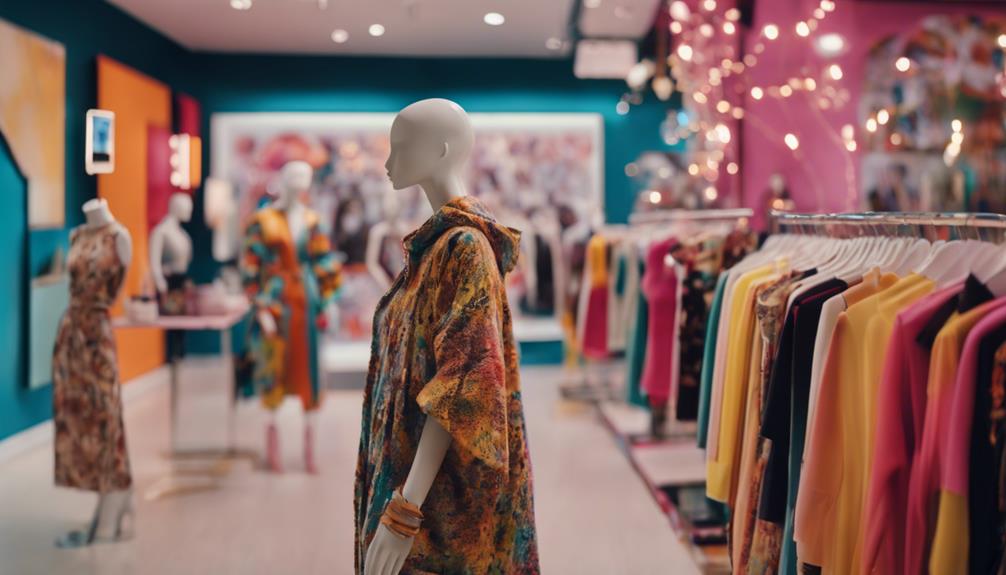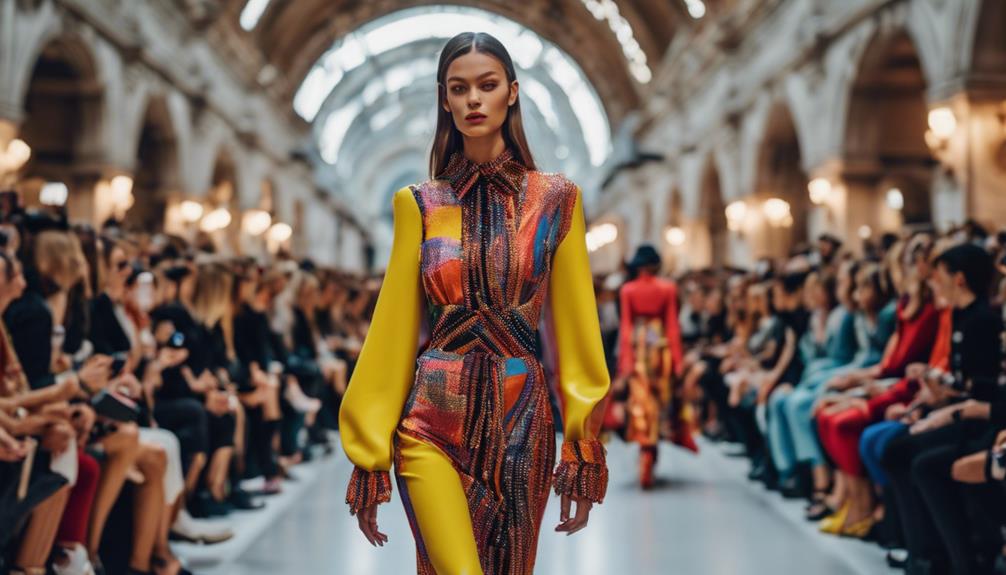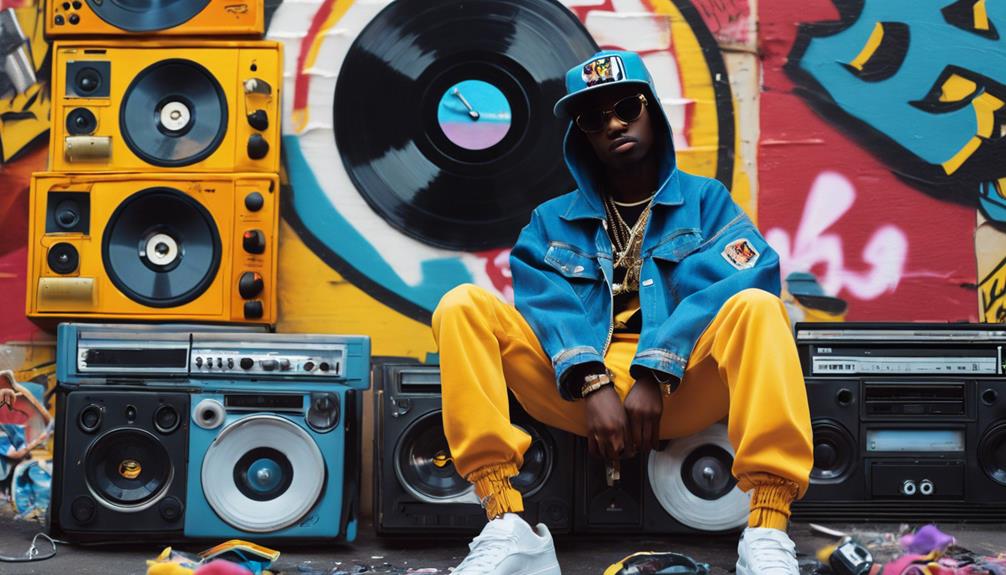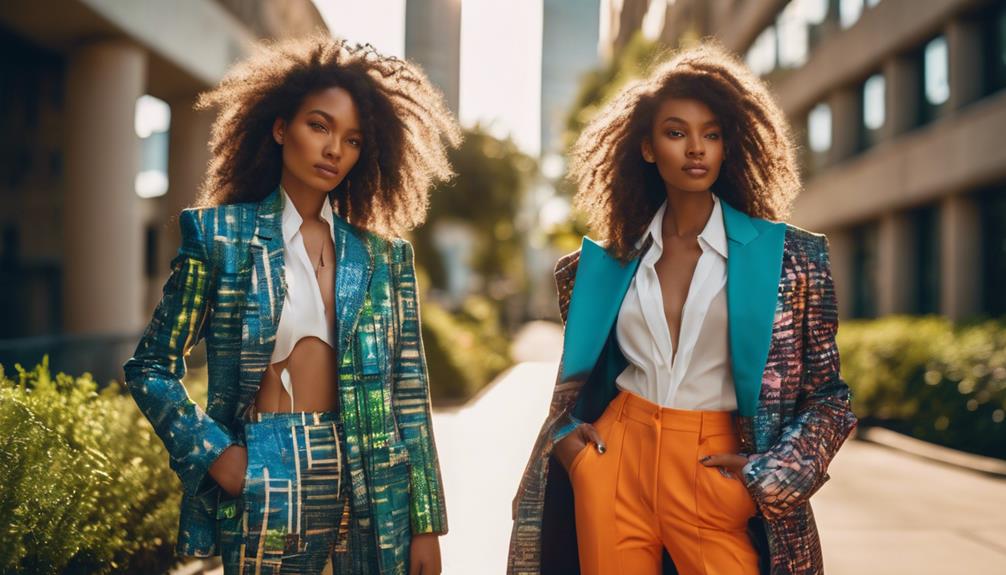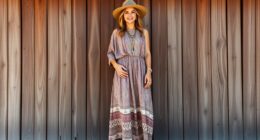To take your fashion brand to the next level, focus on establishing your distinctive identity through unique silhouettes and a consistent visual aesthetic. Utilize sustainable materials, such as organic cotton and recycled fabrics, to appeal to environmentally conscious consumers. Embrace social media and influencer marketing to forge emotional connections and increase brand visibility. Showcase timeless wardrobe essentials that emphasize longevity, all while offering a user-friendly shopping experience with personalized suggestions. Lastly, utilize storytelling to captivate your audience and build brand loyalty. Explore novel techniques and effective strategies that will truly elevate your brand.
Key Takeaways
- Emphasize sustainable practices by incorporating eco-friendly materials and transparent supply chains to attract conscious consumers and build brand loyalty.
- Create a cohesive brand image through signature silhouettes and visual language that resonates emotionally with your target audience.
- Highlight timeless wardrobe staples in your marketing strategies to promote durability and encourage repeat purchases among customers.
- Leverage digital technologies, such as 3D printing, to minimize waste and offer innovative, on-demand production solutions.
Origin and historical background of the fashion trend/style
Understanding fashion's transformative journey helps you appreciate how styles evolve over time.
You'll see how cultural icons and movements shape trends, influencing what you wear today.
Fashion's Transformative Journey
Fashion's transformative journey began in the 19th century, when the Industrial Revolution sparked mass production, making stylish clothing accessible to everyone. This shift not only democratized fashion but also laid the groundwork for modern fashion marketing strategies.
As the industry evolved, designers like Coco Chanel and Christian Dior emerged, emphasizing brand identity and challenging traditional norms, which changed how consumers viewed clothing.
The introduction of ready-to-wear collections in the mid-20th century further revolutionized the industry, allowing you to purchase fashionable pieces without custom tailoring.
Fashion magazines played an essential role in shaping public taste, using market research to influence what was seen as trendy. This created a customer experience that linked emotional resonance with brand loyalty.
Cultural Icons and Movements
Cultural icons have always shaped fashion trends, reflecting the social attitudes and movements of their time. In the 1950s, figures like Audrey Hepburn and James Dean became symbols of elegance and rebellion, helping to define the styles of their era.
The 1960s brought the mod movement, driven by youth culture and music legends like The Beatles, which introduced bold prints and mini skirts. This shift in fashion mirrored a broader societal change, as young people sought to break away from traditional norms.
The punk movement of the 1970s further challenged societal norms, with designers like Vivienne Westwood creating edgy styles featuring leather and studs.
This rebellious spirit paved the way for the hip-hop culture of the 1980s, where urban style emerged through oversized clothing and sneakers, popularized by icons such as Run-D.M.C. and LL Cool J.
Key Characteristics
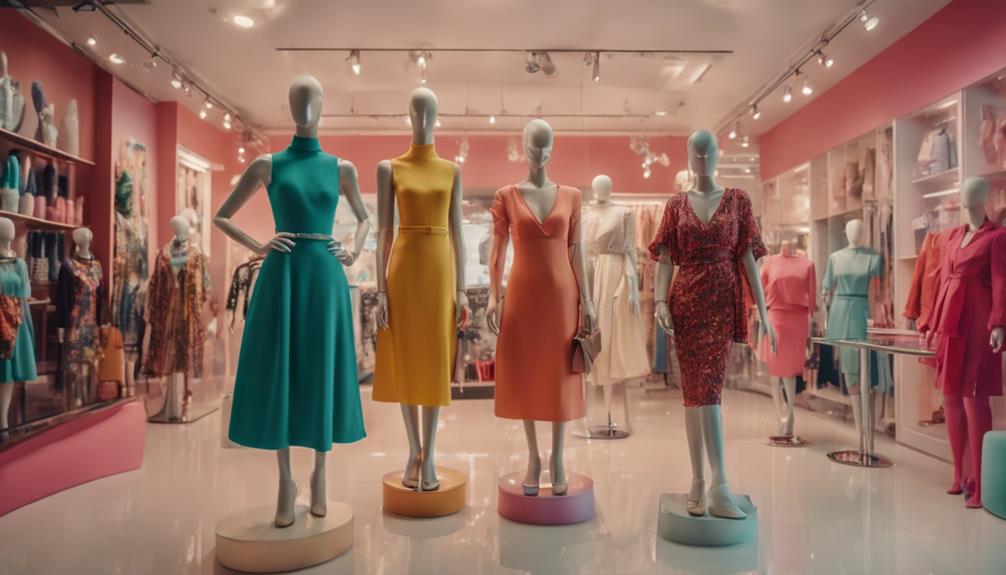
When you think about key characteristics in fashion marketing, signature silhouettes and patterns often come to mind.
You'll also notice the growing emphasis on sustainable fabrics and timeless wardrobe staples that resonate with today's conscious consumers.
Understanding these elements can help you craft a more compelling marketing strategy.
Signature Silhouettes and Patterns
Signature silhouettes and patterns play an essential role in shaping a brand's identity, making it easier for consumers to recognize and connect with the label. When you incorporate signature silhouettes—like A-line, peplum, or oversized shapes—into your designs, you create a unique brand identity that stands out in a crowded market. These elements not only enhance consumer recognition but also foster brand recall, ensuring that shoppers remember your label long after they've seen it.
Patterns, such as stripes, florals, and geometric designs, contribute notably to your brand's visual language. They evoke emotions and associations, allowing your target audience to resonate with your offerings. Think about iconic brands like Chanel and Burberry; their distinctive styles have become synonymous with their names, showcasing the power of unique patterns and silhouettes.
Consistency in these signature elements across your collections helps you maintain a cohesive brand image, which builds consumer trust and encourages repeat purchases. By focusing on these key characteristics, you can effectively elevate your brand and establish a lasting connection with your audience.
Sustainable Fabrics and Dyes
As you develop a distinctive brand identity through signature silhouettes and patterns, incorporating sustainable fabrics and dyes can further enhance your appeal to eco-conscious consumers.
Sustainable fabrics, like organic cotton, hemp, and Tencel, are produced with minimal environmental impact, using less water and avoiding harmful chemicals. By choosing these materials, you not only contribute to a healthier planet but also attract consumers who prioritize eco-friendly options.
Utilizing recycled materials, such as recycled polyester and nylon, helps divert waste from landfills and reduces the demand for virgin resources. This approach supports a circular economy, aligning your brand with sustainable practices.
Additionally, incorporating natural dyes derived from plants and minerals minimizes the toxic chemical load associated with synthetic dyes while offering unique color variations that enhance your garments' aesthetic.
To guarantee credibility, consider obtaining certifications like the Global Organic Textile Standard (GOTS) or OEKO-TEX. These certifications reassure consumers that your sustainable fabrics meet stringent environmental and social criteria throughout their production processes.
Timeless Wardrobe Staples
Timeless wardrobe staples, like a classic white shirt and tailored blazer, are essential pieces that effortlessly elevate your style for any occasion. These versatile items, including well-fitted jeans, allow you to mix and match with ease, promoting a cohesive fashion collection.
When you invest in these staples, you're not just enhancing your wardrobe; you're also embracing sustainable fashion practices. Typically crafted from high-quality materials, timeless staples guarantee durability and longevity, aligning with the growing consumer demand for responsible fashion. This commitment to quality can greatly boost your brand awareness, as customers appreciate reliability and craftsmanship.
Moreover, brands that focus on timeless wardrobe staples often experience higher customer loyalty. By offering pieces that withstand the test of time, you create a sense of trust and encourage repeat purchases.
Implementing effective marketing strategies that highlight these characteristics can further strengthen your brand's position in the market.
Modern Interpretation
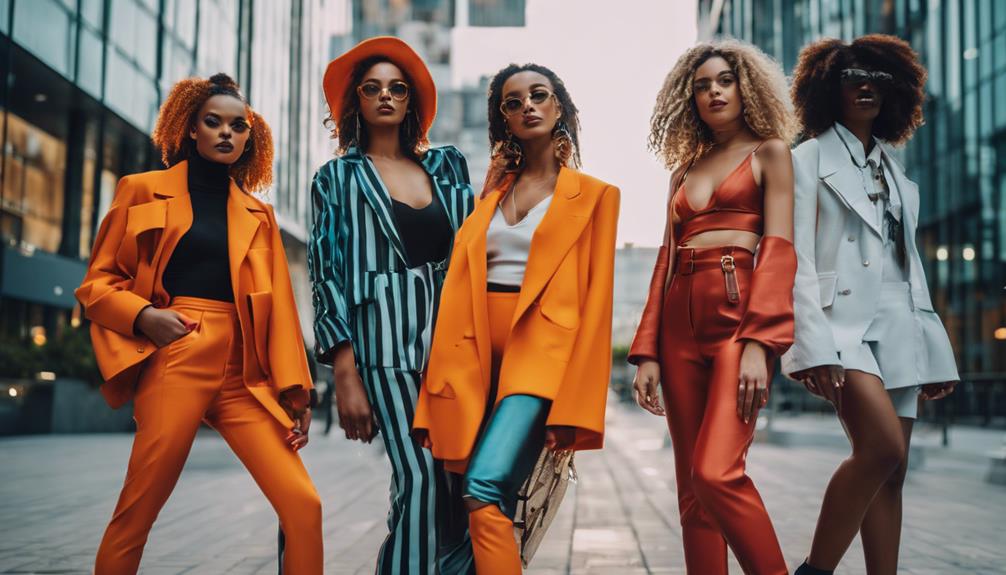
In today's fashion landscape, you're seeing a strong push towards sustainable innovations that resonate with eco-conscious consumers.
Fashion leaders and icons are setting trends by embracing these practices, making sustainability a key factor in brand loyalty.
As you explore this modern interpretation, consider how these elements shape the industry and influence your purchasing decisions.
Sustainable Fashion Innovations
Sustainable fashion innovations are reshaping the industry by prioritizing eco-friendly materials and practices that resonate with a growing number of conscious consumers. You'll find that 66% of shoppers are willing to pay more for sustainable products, reflecting their desire for environmentally responsible choices. Brands are increasingly adopting circular fashion models, aiming to recycle or repurpose up to 80% of textile waste, dramatically reducing their environmental footprint.
Transparency is key in this shift; 94% of consumers express loyalty to brands that clearly communicate their supply chain practices. As a result, many companies are leveraging digital technologies like 3D printing and virtual fitting rooms to minimize waste and enable on-demand production.
Moreover, innovative practices such as upcycling and collaborative consumption are gaining traction. The resale market is set to reach $64 billion by 2024, showcasing a significant change in consumer behaviors towards more sustainable options.
Sustainable Fashion Leaders
Leading brands in the fashion industry are redefining success by prioritizing eco-friendly materials and transparent practices that resonate with today's conscious consumers. Brands like Patagonia and Reformation have set the standard in sustainable fashion, showcasing their commitment to ethical consumerism.
By emphasizing transparency in their supply chains, they build brand loyalty and trust among their clientele, with 66% of global consumers willing to pay more for sustainable options.
The sustainable fashion market is projected to reach $8.25 billion by 2023, fueled by a growing demand for eco-friendly materials and responsible production methods. Many leaders in this space actively promote circular fashion practices, focusing on recycling and upcycling to reduce waste while creating unique products that appeal to eco-conscious shoppers.
Social media plays an essential role in elevating these brands, as they leverage platforms to share their sustainability efforts and engage with their communities. For instance, Everlane's effective use of social media has helped them achieve significant revenue growth while maintaining ethical standards.
Fashion Icons and Trendsetters
Fashion icons like Rihanna and Kanye West are shaping the industry by blending their unique styles with a powerful social media presence, influencing trends and consumer choices worldwide. These influencers utilize platforms like Instagram and TikTok to engage millions, making influencer marketing a vital strategy for modern brands. With 49% of consumers relying on their recommendations, it's clear that leveraging these personalities boosts brand awareness considerably.
Take a page from their playbook: integrate storytelling into your collections. Fashion icons often share narratives that resonate with their audience, creating emotional connections. Brands like Off-White exemplify this by merging streetwear and high fashion, driving a 40% increase in recognition among millennials and Gen Z.
Moreover, sustainability is no longer just a trend—it's essential. A striking 66% of consumers are willing to pay more for sustainable products. As a brand, you can capitalize on this by adopting eco-friendly practices, similar to what Stella McCartney has done.
Styling Tips
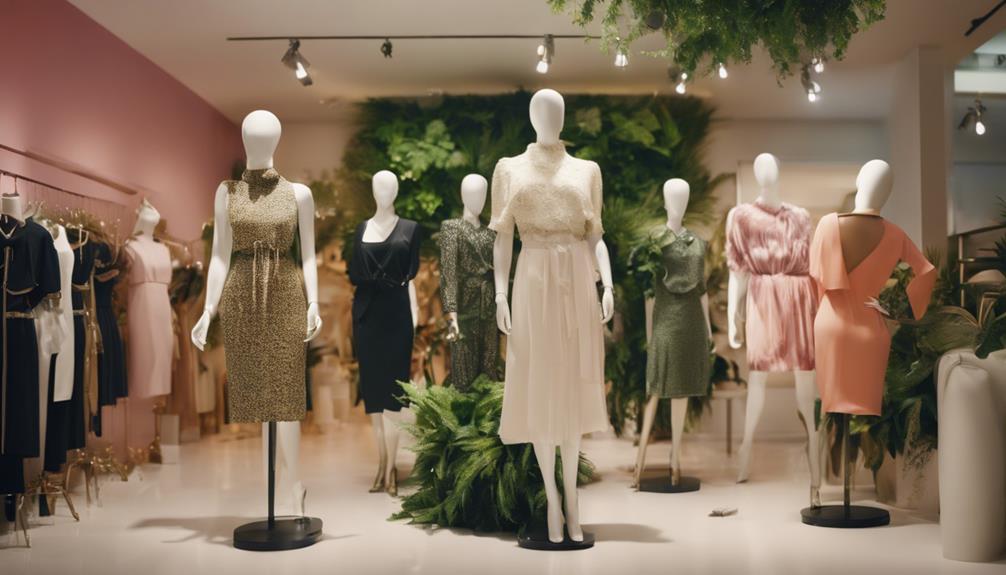
When it comes to styling, a classic white button-up shirt is your best friend for versatility.
You can easily layer it with different pieces and play with color coordination to create a variety of looks.
Let's explore how these techniques can elevate your wardrobe and keep your outfits fresh and fashionable.
Classic White Button-Up Shirt
The classic white button-up shirt is your go-to piece for effortlessly elevating any outfit, whether you're dressing up for the office or keeping it casual on the weekend. This versatile staple can seamlessly switch between looks, making it a must-have in your wardrobe. Pair it with tailored trousers and heels for a polished office appearance; add a statement necklace, and you're ready for evening events.
For a laid-back vibe, tuck the shirt into high-waisted jeans, roll up the sleeves, and slip on some ankle boots for a chic but effortless look. If you're looking to showcase your unique style, consider incorporating accessories like a colorful belt or a patterned scarf. These touches can transform the classic white button-up shirt into something distinctly yours.
When shopping, explore various fashion brands that offer this essential item. Check customer reviews to find the best quality options available in their online store. With effective marketing, you can boost sales and guarantee your classic white button-up becomes a centerpiece of your fashion collection, reflecting your personal style while remaining timeless.
Layering Techniques for Versatility
Mastering layering techniques can transform your wardrobe, offering endless versatility and style as you adapt your outfits for any season. By focusing on seasonal adaptability, you can easily switch from summer to winter without sacrificing your fashion sense.
Start by creating visually appealing silhouettes; layering pieces that elongate your body creates a more sophisticated look.
Incorporating different textures is essential for adding depth to your outfits. For example, mix knits with silks or denim with leather to make your layered looks more interesting. This variety not only enhances visual appeal but also allows you to play with warmth and comfort levels.
Don't underestimate the power of accessories! Strategic use of belts, scarves, and jewelry can elevate a basic layered outfit into a chic statement ensemble. A well-placed belt can define your waist, while a vibrant scarf can add a pop of color.
Color Coordination Techniques
Layering pieces effectively can be enhanced by understanding color coordination techniques that elevate your style and outfit combinations.
Start by familiarizing yourself with the color wheel. Using complementary colors—those opposite each other—creates vibrant contrasts, while analogous colors, which sit next to each other, offer a more harmonious look.
Incorporating neutral tones like black, white, and gray can balance bold hues, making your outfit versatile for various occasions. Seasonal color palettes play an essential role too; warm colors like reds and oranges shine in autumn, while cool tones such as blues and greens suit spring and summer wardrobes.
Implement the 60-30-10 rule for color distribution: 60% dominant color, 30% secondary, and 10% accent. This creates visually appealing outfits that draw attention.
Shopping Guide
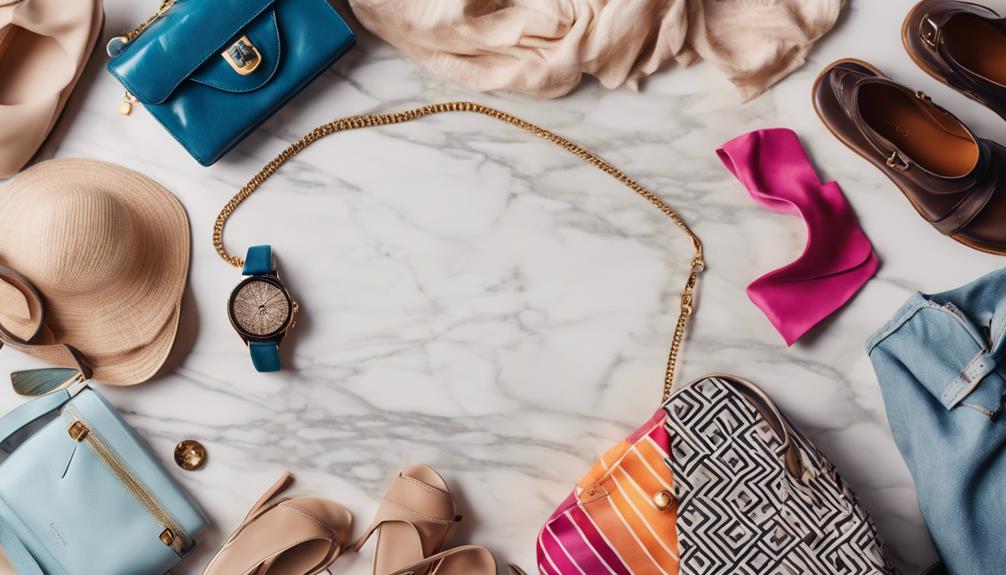
Creating an effective shopping guide can transform your online retail space into a user-friendly experience that drives sales and customer satisfaction.
Start by structuring your guide with clear product categories and intuitive navigation. This enhances the online shopping experience and leads to higher conversion rates.
Incorporating high-resolution images and engaging videos will greatly boost consumer interest, making products more appealing. Additionally, offering personalized product recommendations based on browsing history can further improve customer satisfaction, as tailored suggestions lead to repeat purchases.
A streamlined checkout process is essential; it reduces cart abandonment rates, which can average around 70%. By making the purchase experience quick and hassle-free, you encourage customers to complete their orders.
Don't forget to highlight current promotions, discounts, and loyalty rewards within your shopping guide. Creating a sense of urgency through these offers can motivate customers to finalize their purchases, leveraging the psychological principle of scarcity.
Upcycling Old Clothing Ideas
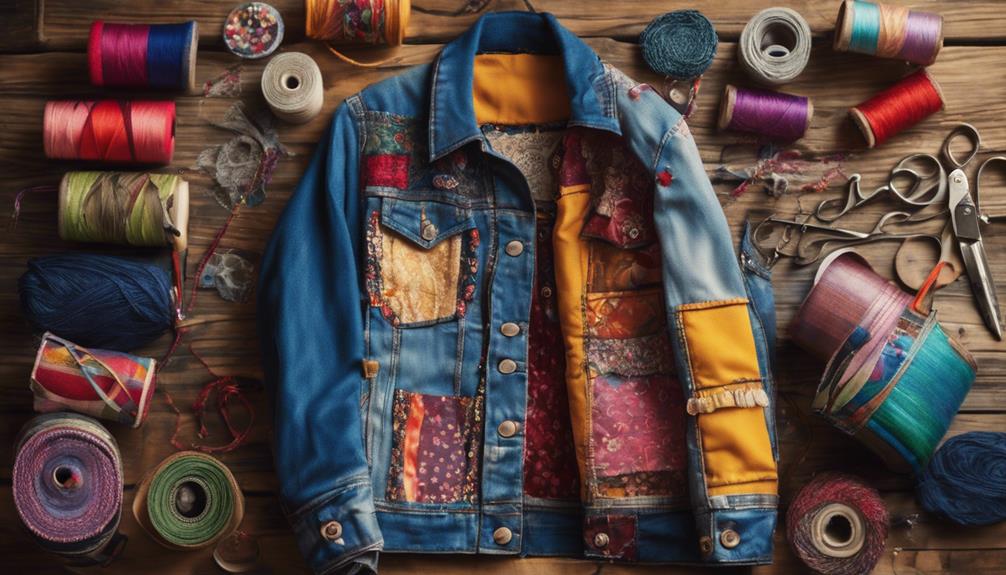
When you think about upcycling, consider how repurposing vintage fashion pieces can breathe new life into your wardrobe.
You might also explore personalized embroidery techniques to add a unique touch to your creations.
These strategies not only promote sustainability but also let your creativity shine.
Repurposing Vintage Fashion Pieces
Repurposing vintage fashion pieces not only breathes new life into old garments but also aligns with the growing consumer preference for sustainable and unique styles. By embracing sustainability, you're tapping into a considerable market trend; studies show that 66% of global consumers are willing to pay more for eco-friendly brands.
When you creatively transform old clothing, you create unique pieces that stand out and cater to individuals seeking distinctive fashion. Incorporating vintage elements into your designs can resonate with millennials, 57% of whom express interest in secondhand clothing. This nostalgic approach not only enhances your offerings but also enriches your brand storytelling.
Sharing the narrative behind your transformed pieces fosters emotional connections with customers, boosting their loyalty and engagement. Utilizing social media platforms like Instagram is essential for showcasing your upcycled creations. Highlighting before-and-after transformations can considerably enhance your brand's visibility.
Posts featuring user-generated content receive 79% more engagement than brand-generated content, driving customer engagement further. By focusing on repurposing vintage fashion, you're not just selling clothes; you're promoting a lifestyle that values sustainability and individuality.
Personalized Embroidery Techniques
Personalized embroidery techniques can elevate old clothing into standout fashion statements, allowing you to express your individual style while promoting sustainability. By upcycling your garments with unique designs, you not only breathe new life into pieces but also demonstrate a commitment to sustainable fashion. Research shows that 66% of consumers are willing to pay more for brands that prioritize ethical practices, so this approach can enhance your brand awareness and customer loyalty.
Using embroidered patches or monograms can greatly increase the appeal of your upcycled items. These personalized touches make your clothing more desirable, especially among Gen Z shoppers who love unique finds.
Plus, engaging in personalized embroidery fosters a sense of community among crafters. When you share your creations on social media, you not only showcase your skills but also invite others into your journey, boosting customer engagement.
As you embrace personalized embroidery techniques, you contribute to the growing movement of sustainable fashion. By showcasing your creativity and encouraging others to join in, you help reduce textile waste while building a brand that resonates with values-driven consumers.
Cultural Impact

When you think about iconic fashion moments in film, it's clear how deeply intertwined fashion is with culture.
Fashion activism and advocacy can shape perceptions and drive social change, making your brand's message more impactful.
Iconic Fashion Moments in Film
Iconic fashion moments in film have a profound influence on how society perceives style, shaping trends that resonate long after the credits roll. Think about Audrey Hepburn's little black dress in 'Breakfast at Tiffany's' or the chic ensembles in 'The Devil Wears Prada.' These moments not only define characters but also elevate your brand by creating a lasting cultural phenomenon.
Movies like 'Clueless' made specific fashion items, such as the plaid skirt suit, staples in wardrobes everywhere. These films spark fashion trends that trickle down to everyday consumers, inspiring designers to create collections that echo their cinematic counterparts.
Additionally, films like 'Sex and the City' have given rise to fashion tourism, where fans flock to iconic locations to relive the glamour they admired on-screen.
The impact of these moments goes beyond mere inspiration; they can drive sales for featured brands. For instance, after 'The Great Gatsby' was released, items inspired by its lavish costume design surged in popularity.
Fashion Activism and Advocacy
Fashion activism and advocacy are reshaping the industry by urging brands to champion social justice and sustainability, resonating deeply with today's conscious consumers.
You're likely to notice that the rise of sustainable fashion has led to a 35% increase in demand for eco-friendly products. This shift pushes brands to adopt transparent supply chains and ethical practices that align with your values.
With the help of social media, movements like #WhoMadeMyClothes have gained momentum, holding brands accountable for their labor practices and enhancing consumer awareness about ethical production.
Influencer collaborations emphasizing fashion activism have also become popular, showing that 70% of consumers are more likely to support brands advocating for social causes. This trend markedly boosts brand loyalty and identity.
Brands like Patagonia and Reformation are excellent examples of how integrating activism into messaging can lead to increased sales and a dedicated customer base that values commitment to environmental and social issues.
Frequently Asked Questions
How Do You Elevate a Fashion Brand?
To elevate your fashion brand, establish a strong online presence, collaborate with influencers, use data-driven strategies, create compelling stories, and leverage effective email marketing. These steps will enhance visibility, engagement, and ultimately, sales.
What Are the Strategies That Can Elevate a Brand?
To elevate your brand, leverage influencer marketing, utilize data-driven strategies, enhance customer retention through email campaigns, optimize social media presence, and focus on storytelling to build emotional connections with your audience.
How Do I Promote My Fashion Brand?
To promote your fashion brand, leverage social media for engaging content, implement email marketing for direct communication, collaborate with micro-influencers for authenticity, optimize your website for search engines, and use retargeting ads to reconnect with potential customers.
How Do You Create a Marketing Strategy for a Clothing Brand?
To create a marketing strategy for your clothing brand, define your goals, research your audience, choose diverse channels, leverage data insights, and consistently assess performance metrics to refine your approach for better results.
How Can Fashion Illustration Contribute to Elevating Your Brand in Fashion Marketing?
The use of learn fashion illustration art can substantially elevate a brand in fashion marketing. High-quality fashion illustrations can help showcase a brand’s unique aesthetic and style, giving it a competitive edge in the market. These illustrations also have the power to visually communicate the brand’s identity and attract a larger audience.
Conclusion
In today's fast-paced fashion world, embracing innovative marketing strategies can truly elevate your brand.
By understanding the origins and characteristics of trends, you can create modern interpretations that resonate with your audience.
Don't forget to share styling tips and shopping guides that inspire your customers.
Upcycling old clothing not only promotes sustainability but also connects with a growing cultural consciousness.
So, plunge into these strategies and watch your brand flourish in the competitive fashion landscape!
